Lock Blog
A resource for consumers, locksmiths, and security professionals
A resource for consumers, locksmiths, and security professionals
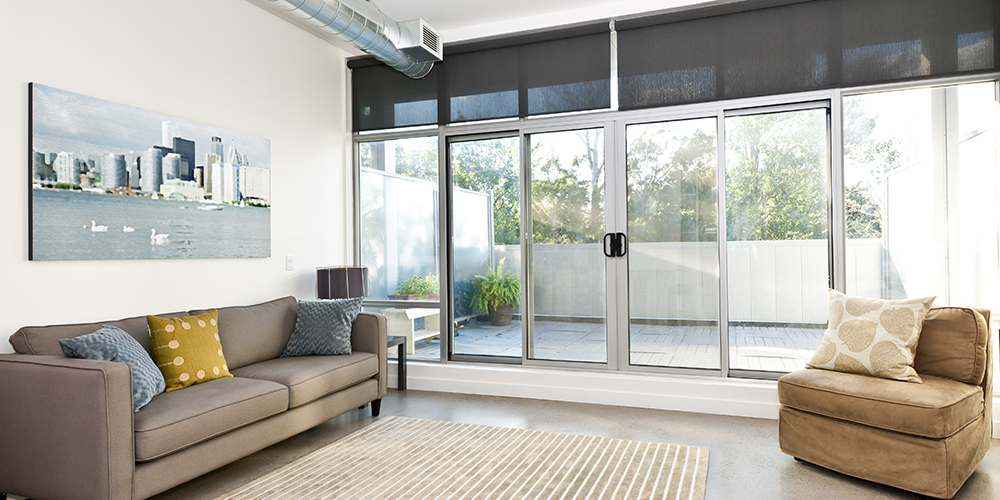
Sliding doors are a thing of beauty in almost every home. If you have sliding doors that are near a living room or dining room, the effect they have on the room when the sun hits the doors is breathtaking. That description doesn’t even begin to do it justice. It comes as no surprise that a majority of homeowners employ the use of sliding doors, and more specifically, sliding glass doors. Many of these doors are used as backdoors and access ways to patios and backyards. Sliding doors are also a good addition to any home and help increase property value by essentially bringing the outside in. It gives homeowners the comfort of enjoying the view of everything outside while still being indoors (nature voyeurism).
On the flip side of a rather illustrious coin, some homeowners understand just how vulnerable sliding doors make your home. Doors are an integral part of security, and sliding glass doors might be even more so. It gives people who are positioned in the right angle, unfettered visual access to what goes on in your home. This seemingly harmless action actually increases the chances of a burglary. Either way, you want to make sure that your home is constantly secure from prying eyes, and even worse, from those who wish to break in. Do not be tempted by the illusion that the sliding doors you use in your home come pre-installed with security additions that cannot be bypassed. When most homeowners are assessing their security and making additions they focus on changing out the locks on the main doors and adding alarm systems. They tend to get so caught up in the intricacies of their upgrades that they forget the simple things, like fortifying windows and sliding doors.
A good number of burglars make their ways into homes through these mediums because compared to everything else, they are less fortified and offer up less resistance. We are not saying you should transform your home into Camp David or board up all your windows and render your sliding doors ineffective. Au contraire, we are merely here to help you make your home as secure as possible. Taking measures to keep your home safe from criminals is always to your benefit. It is best to keep in mind that for something to be made secure you do not necessarily have to dish out a lot of money, sometimes all you need is a little creativity and some basic supplies that are easy to come across. We are going to show you how to make your sliding doors more secure with the top 3 unconventional ways to secure your sliding doors.
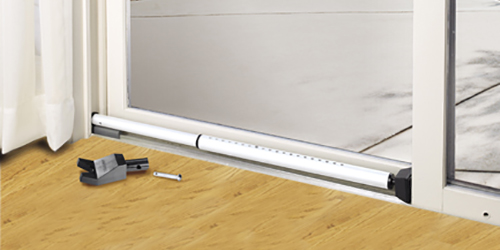
Sliding doors operate in a very simple manner. They move along a set of tracks that are made of vinyl, metal or wood. Visualize the tracks as guidelines that show the door where to move. In order to ease their movement, they are normally fitted with rollers on the side, the top or the bottom. The latch locks on the door can easily be compromised, so you want to make sure that the doors have a secondary level of security to deter burglars and offer up a good fight.
A good way of doing this is to insert a bar into the tracks of the door to impede movement and prevent them from being opened. This works best for doors that open horizontally along their tracks. The bar can be made of metal, wood or high tensile/dense plastic, to name a few materials. This is a simple and cost-effective way to increase the secondary security of your sliding door, do keep in mind that not all of these home-made security improvements are worthwhile. Homeowners will most likely be able to find these materials at local hardware stores, and the stores employees will be more than happy to help you cut the materials down to the proper size. One thing to be wary of is the length you cut the bar down to. Ensure that it is not too short because if you give a burglar even just a little bit of wiggle room they will exploit it and you will reap the consequences. A good way to measure the amount of space you allow between the bar and the door is to see how far the door itself fits into its adjoining frame. That should give you a margin of error to work with. In addition to this, consider painting the material you use to match the frame of the door. This will help keep burglars confused when they become aware that something is blocking the door, and it will also keep them from identifying the bar and attempting to remove it.
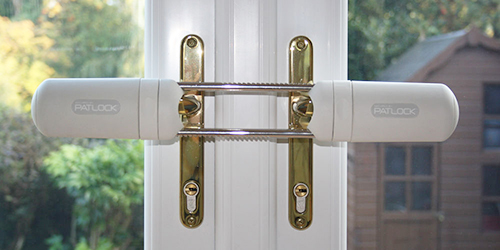
Did anyone else read that in a really authoritative renaissance era voice? Just me? Well, don’t mistake the subheading to mean we want you to chain your doors up and send them to prison, no. That would be ludicrous. Although I literally do mean to put them in chains. This other unconventional method works best on doors that slide along tracks as well. It works better with those that part at the middle to open and slide horizontally away from each other (double sliding doors) but it can also be retrofitted to work with single sliding doors that move from one side of the door to the other. Look into buying a small chain with fastener.
Now, let me explain what “put them in chains” means. It refers to the act of chain linking the handles of your door. If it is for a door that parts at the middle it would be best to run a taut and rather short chain link through each handle and then lock them together. This prevents anyone from the outside that is attempting to get in from parting the doors completely and in effect gives you an added layer of security. For doors that open to only one side and thus have only one handle, it would be best to do a DIY project or call a professional and drill an additional handle to the side of the wall closest to the door just so you can employ the same method described above. Keep in mind that you do not necessarily need to use a chain link, you could use a smaller version of the really popular bike locks which are easy to come by. Just be mindful of the material and pick the one that is least resistant to being cut.
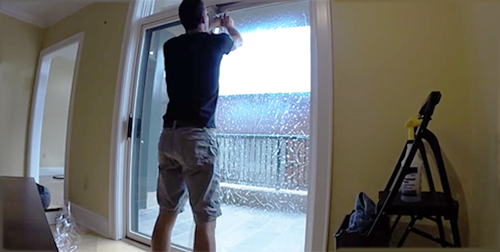
This final option is considered unconventional simply because a good number of homeowners overlook it, even though it is one of the most effective (in conjunction with the methods listed above). Window security film is a easy solution for this type of work.The final way is to simply reinforce the glass of your sliding doors. The above methods that were listed work perfectly well to deter criminals, but some burglars are more determined than others, and there is nothing that will stop them from simply breaking the glass of your doors and walking right in. This is where the reinforcement comes in. The use of a layer of glass film over the doors should do the trick. Several companies offer varying options for these protective films. Some of them come equipped with tints to prevent anyone from seeing into your home, however, it still affords you the luxury of peering out and enjoying the view. These protective films are manufactured to withstand immense pressure and are used both to prevent break-ins and to also shield damage from hurricanes and strong winds. They are a really good addition to any home and they work well in tandem with the other methods described above. For instance, if a burglar becomes aware that you have chained the doors together or that you have blocked the tracks, they could simply break a portion of the glass and remove the obstruction. The more impatient ones will probably attempt to break the entire door, but with the protective film both of these scenarios are negated.
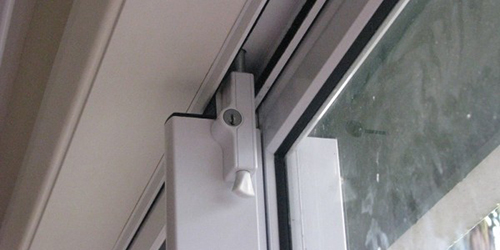
As stated earlier, the security of your sliding doors can also be compromised when the doors are lifted off their tracks and moved above whatever may be in the way. This solution may not come in handy when you chain the handles, but it’s still good to know how to counter burglars who have the energy to do all that work.
To counter this it is best to employ the use of an anti-jimmy door plate. These are normally used on standard doors, but can easily be adapted to sliding glass doors. You can obtain these at your local hardware store, but if you’re feeling a little crafty you can easily make one yourself. All you need is to screw a decent sized strip of wood or metal into the cavity within the upper door tracks. Similar to using a bar to block the lower tracks, you should make sure that the length of the plate you are installing is big enough to bar the door from being raised out of its tracks, but small enough to allow the door to move easily when you need to go in or out.
Category: How To's, Residential, Safety & Security